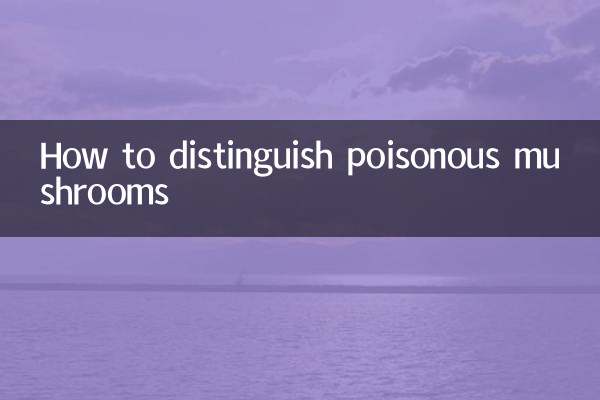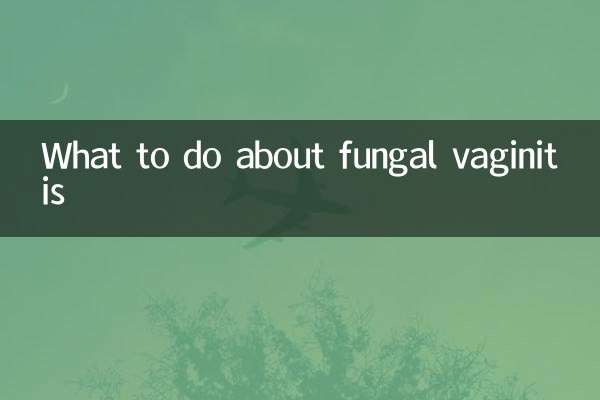How to distinguish poisonous mushrooms
With the arrival of summer, wild mushrooms have entered the peak growth season. Recently, news about poisoning caused by accidentally eating poisonous mushrooms has been published frequently across the Internet and has become a hot topic. Many netizens share their experiences of picking wild mushrooms, but how to distinguish poisonous mushrooms from edible mushrooms has become the focus of attention. This article will provide you with structured data and methods to help you safely distinguish poisonous mushrooms.
1. The core difference between poisonous mushrooms and edible mushrooms

Poisonous mushrooms and edible mushrooms may look very similar in appearance, but they can be judged by the following key characteristics:
| Features | poisonous mushrooms | edible mushrooms |
|---|---|---|
| cap color | Usually bright (red, yellow, orange, etc.) | Mostly white, brown or gray |
| gill color | White or light color (some will become darker as they mature) | Mostly pink, brown, etc. |
| Stem characteristics | There are often bacterial rings and bacterial holders | Usually no special structure |
| Juice | There may be discoloration or milky juice after incision. | Usually does not discolor |
| smell | May have a irritating or bitter almond smell | Usually has a mushroom aroma |
2. Common types and characteristics of poisonous mushrooms in China
According to the latest data from the Chinese Center for Disease Control and Prevention, the common types of highly poisonous mushrooms in my country mainly include the following categories:
| Name | Features | Toxicity | Distribution area |
|---|---|---|---|
| White poisonous umbrella | All white, with smooth cap and bacterial ring | Extremely poisonous with high fatality rate | most of the country |
| Amanita muscaria | Red cap with white spots | neurotoxin, hallucinogen | Northeast and Southwest regions |
| Deadly Amanita | Gray-brown cap, white gills | Hepatotoxic, highly lethal | South China and East China |
| Asian black mushroom | Black cap, wrinkled gills | rhabdomyolysis | southern provinces |
3. Misunderstandings in folk identification methods
Recently, many "homespun methods" for identifying poisonous mushrooms have been circulated on the Internet, but these methods are unreliable:
| folk methods | scientific explanation |
|---|---|
| Brightly colored and poisonous | Some edible fungi are also brightly colored, while the highly poisonous Amanita albus is completely white. |
| Insects are not poisonous | Insects have different physiology than humans and have different tolerances to toxins |
| Silverware turns black and is poisonous | Mushroom toxins generally do not react with silver |
| It changes color when cooked and is poisonous | Most toxins are stable at high temperatures and will not decompose by heating |
4. Safety suggestions
1.Not familiar with pickingWild mushrooms, especially do not pick them in parks or community green spaces
2.Don’t trust folk identification methods easily, many highly poisonous mushrooms are very similar to edible fungi
3. Choose regular markets when buying mushrooms.Keep proof of purchase
4. If you accidentally eat poisonous mushrooms,seek medical attention immediately, keep mushroom samples for doctors to identify
5. Pay attention to the information released by the local disease control departmentPoisonous Mushroom Warning Information
5. Poisoning symptoms and emergency treatment
| Poisoning type | Symptoms | incubation period | emergency measures |
|---|---|---|---|
| gastroenteritis type | Vomiting, diarrhea, abdominal pain | 0.5-2 hours | Replenish fluids and seek medical attention promptly |
| neuropsychiatric | Hallucinations, excitement, convulsions | 0.5-4 hours | Prevent self-injury and seek medical attention as soon as possible |
| Hemolytic type | Hemoglobinuria, jaundice | 6-12 hours | Hospitalize immediately |
| Liver and kidney damage type | Oliguria, jaundice, liver pain | 6-24 hours | Race against time to seek medical treatment |
Recently, there have been many poisonous mushroom poisoning incidents in Yunnan, Hunan and other places. The National Health Commission specifically reminds the public not to blindly believe in being able to identify wild mushrooms. The safest thing to do isDon’t pick, don’t buy, don’t eatWild mushrooms of unknown origin. If you find someone around you has accidentally eaten poisonous mushrooms, please call 120 emergency hotline immediately.
We hope that the structured data in this article can help you understand the dangers of poisonous mushrooms more scientifically and stay away from the risk of poisoning. Remember: When it comes to mushroom identification,It is better to miss a thousand than to eat one by mistake.

check the details

check the details